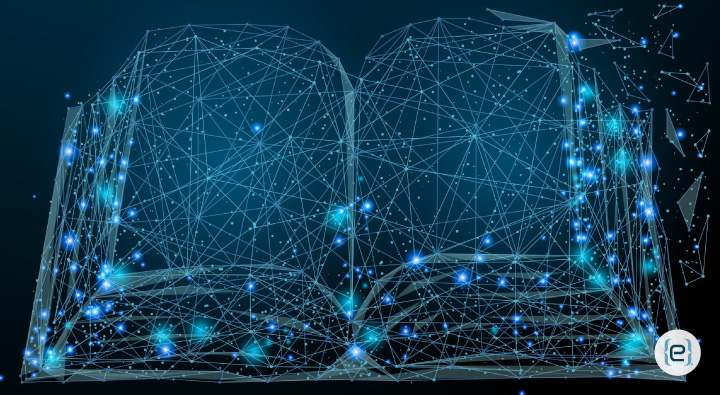Old Tech Books That Still Blow My Mind


Last weekend, I found myself on a classic rainy Sunday mission—digging through my grandpa’s old bookshelf. Nestled among the dust and forgotten paperbacks, I stumbled upon a true relic: “The Computer from Pascal to von Neumann,” published in 1972. Opening those yellowed pages felt less like reading and more like peering through a crystal ball into the digital future we’re living now.
Mind-Blowing Tech Predictions—From the Past
What struck me most was the uncanny foresight these authors had. Take Norbert Wiener’s “Cybernetics” from 1948. Long before smartphones or even personal computers, Wiener was already exploring how humans and machines would interact. I found myself repeatedly thinking, How did he know? The parallels with today’s world are almost eerie.
Then there’s Gerald Weinberg’s “The Psychology of Computer Programming” (1971). I showed it to my coding team at eMazzanti, and they burst out laughing—because Weinberg’s observations about team dynamics and project drama could’ve been written about our last sprint. Some challenges in IT just never change.
And the predictions don’t stop there. E.M. Forster’s 1909 short story, “The Machine Stops,” describes a world where everyone lives in isolation, communicating only through screens. Reading it during lockdown? Let’s just say it hit a little too close to home.
Warnings We Still Haven’t Heeded
Of all the classics I’ve uncovered, Joseph Weizenbaum’s “Computer Power and Human Reason” (1976) stands out. After creating one of the first chatbots, Weizenbaum sounded the alarm about over-reliance on computers. His message? Just because we can build something doesn’t mean we should. I couldn’t help but reflect on this as I caught myself checking my phone for the hundredth time in a day.
It’s fascinating to see how these thinkers anticipated both the triumphs and the pitfalls of technology. For example, the children’s book I found from 1954, with its chrome-plated robots, basically describes today’s smart assistants and home robots—just with more antennas and retro flair. But the real value in these books isn’t just their predictions; it’s the ethical questions they raise. These authors weren’t just building the future—they were asking if we should build it at all.
Lessons for Today’s IT Professionals
At our recent tech meetup, I brought some of these old gems and watched younger developers’ jaws drop. Discovering that AI and neural networks were already being discussed in the 1960s was a revelation for many. It’s a humbling reminder that, as much as technology changes, the core challenges often remain the same. For example, teaching computers to “see” is still a hot topic in AI—one that’s as complex now as it was decades ago.
Sometimes, I’ll pull out one of these classics during a brainstorming session at eMazzanti, only to find that our “revolutionary” new idea had already been imagined in a different era. It’s proof that innovation builds on a foundation laid by the visionaries who came before us. If you’re looking to drive innovation in your own IT strategy, it pays to look back as well as forward.
- Theoretical Foundations: Books like “Cybernetics” and “The Computer from Pascal to von Neumann” remain essential reading for anyone who wants to understand the roots of modern computing.
- Human Factors: “The Psychology of Computer Programming” is still relevant for team leaders and developers alike.
- Ethical Considerations: Weizenbaum’s work is a must-read for anyone concerned about the implications of AI and automation.
Why These Lessons Still Matter
Every time I revisit these vintage volumes, I’m reminded that today’s tech breakthroughs often stand on the shoulders of yesterday’s dreamers. Their questions about ethics, privacy, and the human side of technology are more urgent than ever. With the rise of AI and cloud computing, we’re facing challenges that these pioneers predicted—but didn’t always solve for us.
It’s easy to get caught up in the excitement of the next big thing. But sometimes, the best way to prepare for the future is to listen to the voices of the past. Whether you’re a developer, a business leader, or just curious about where tech is heading, there’s wisdom in those old books that’s as relevant today as ever. If you want to ensure your business is ready for the next wave of innovation, consider exploring strategic IT guidance or learning how AI is shaping cyber security today.
Ready to build on the legacy of tech’s greatest thinkers? Contact eMazzanti to discover how we can help your business turn yesterday’s vision into tomorrow’s success.
Recent Posts
Step Up Your Threat Response With Security Copilot
As we move deeper into 2025, you are probably focusing on ways to expand your…
Watch Out for the Cyber Security Menace
As we move deeper into 2025, you are probably focusing on ways to expand your…
The Rise of AI Agents: Simplifying Tasks and Connecting Technologies
Introducing eCare Bot: Your Intelligent IT Support Assistant In today's fast-paced world, the emergence of…
Server Simplified
At eMazzanti Technologies, we recognize that stable, effective, and expandable servers are essential to the seamless operation of enterprises. For this reason, we collaborate with Hewlett Packard Enterprise (HPE) to offer our clients the best server solutions possible, customized to meet their unique requirements. HPE servers provide the performance and flexibility required for small and big businesses to manage data, support apps, and manage workloads with ease. Customers may choose the best HPE servers for their organization with the assistance of our team of specialists. We take the time to comprehend the particular needs of every client, including those related to processing speed, storage capacity, and security features. Whether our clients require a general-purpose ProLiant server or a…
How to Make Your AI Copy Sound Authentic: Writing Like a Human, Not a Machine
AI writing tools have become popular for creating content quickly. But many readers can spot…
Data Analytics for Old-School Business Owners: Turning Dusty Ledgers into Gold Mines
Data analytics is changing the game for businesses of all types, including old-school industries that…


